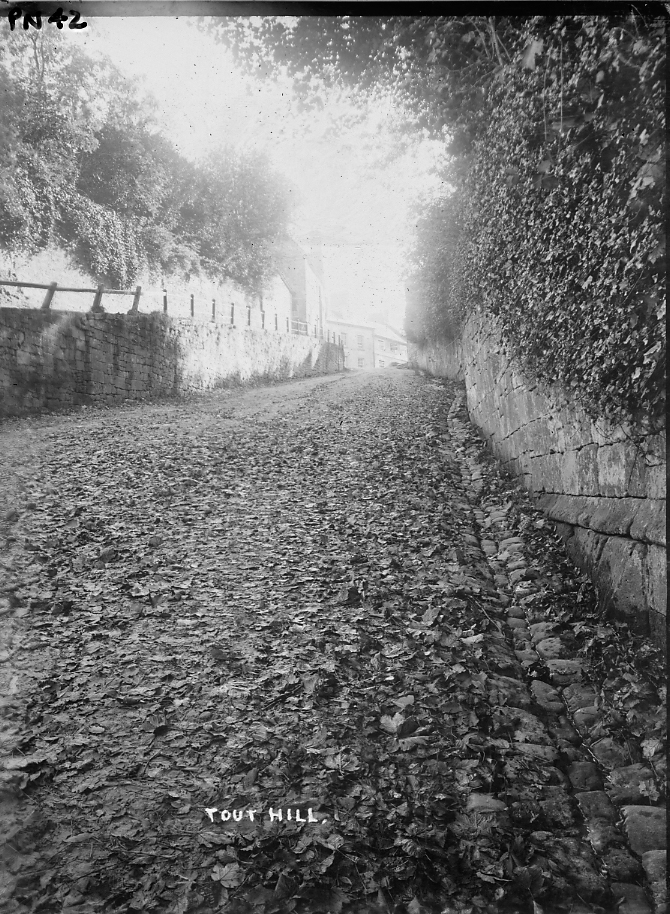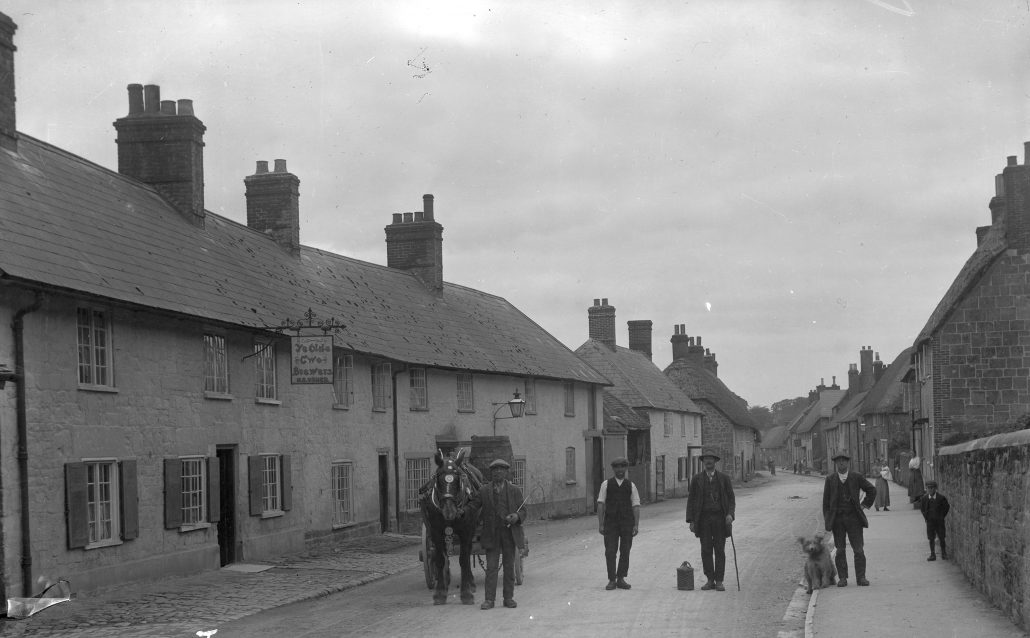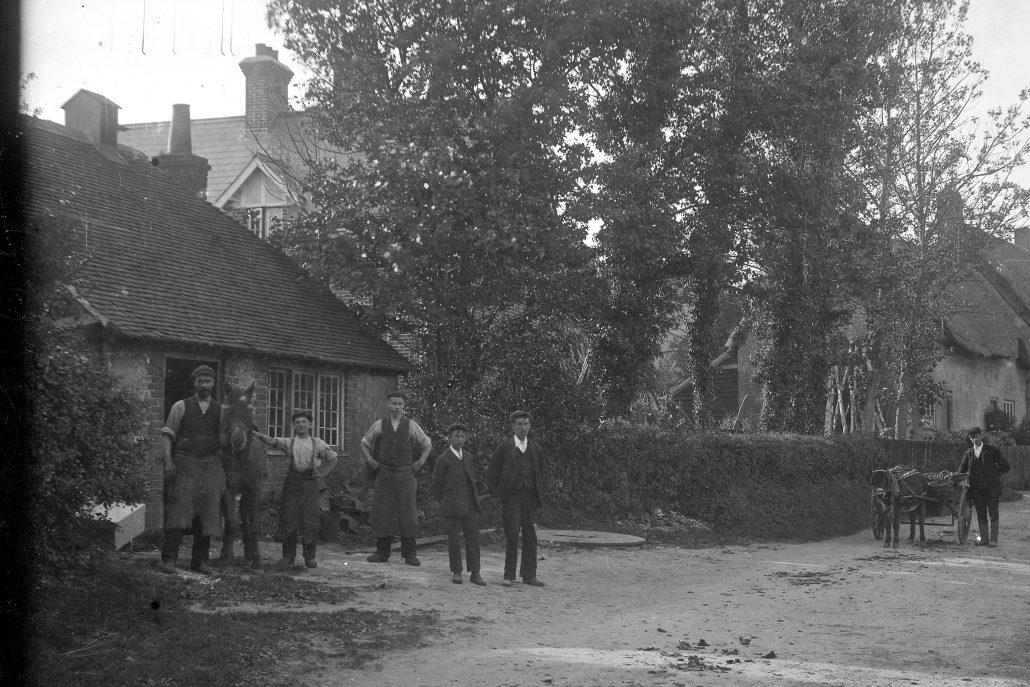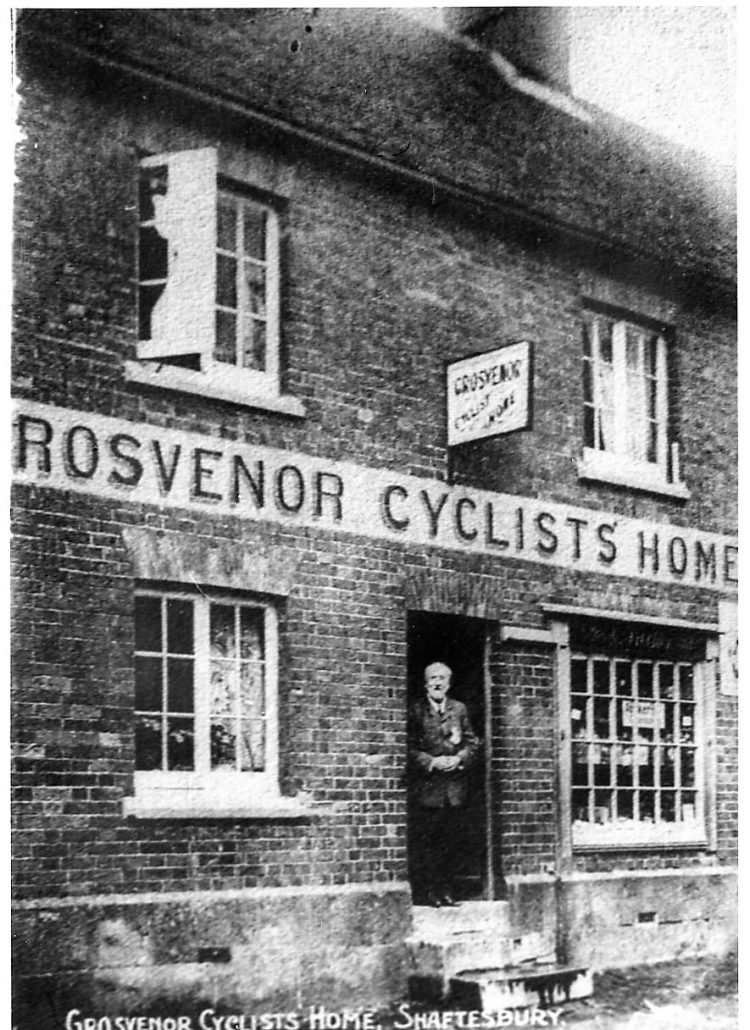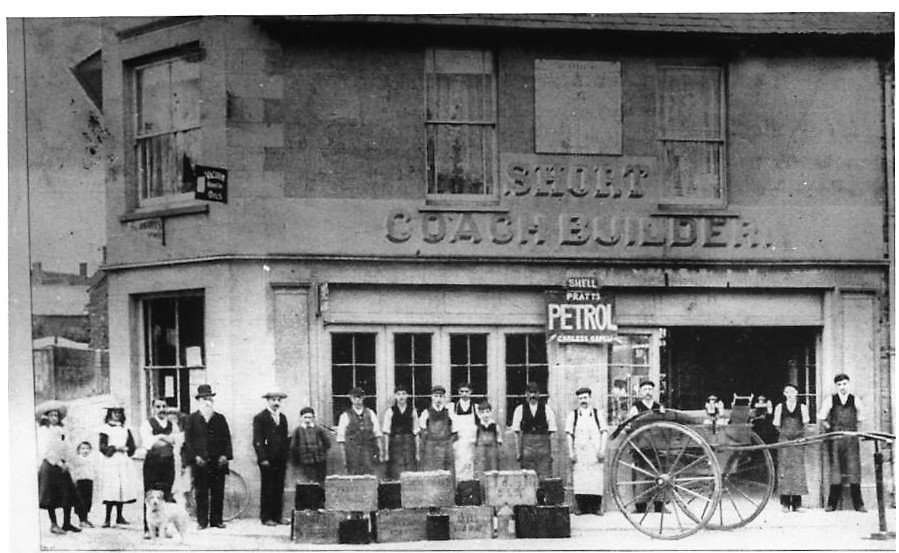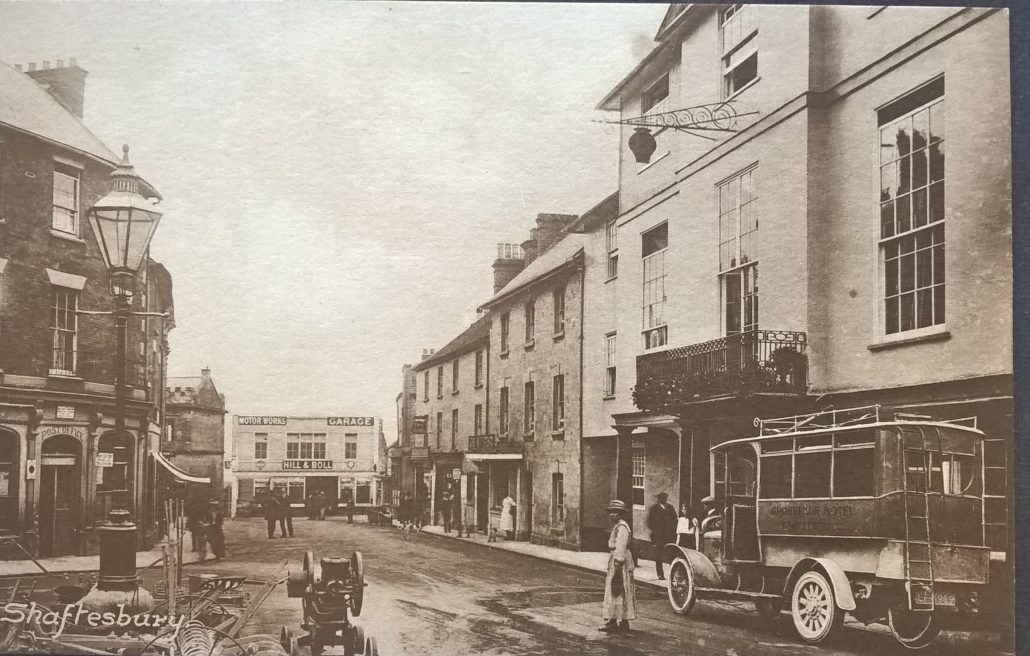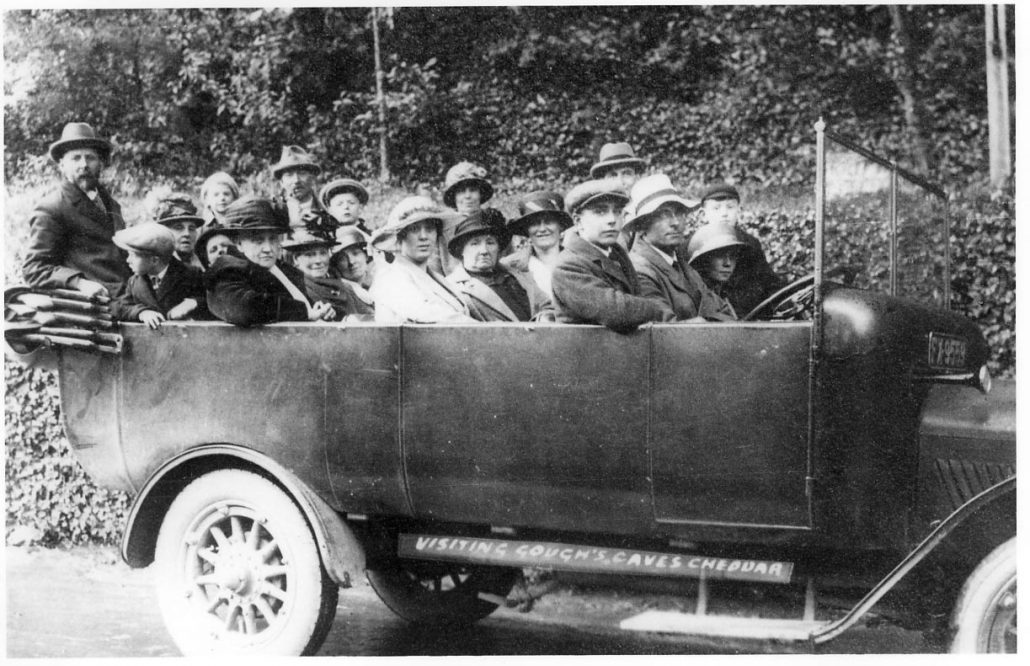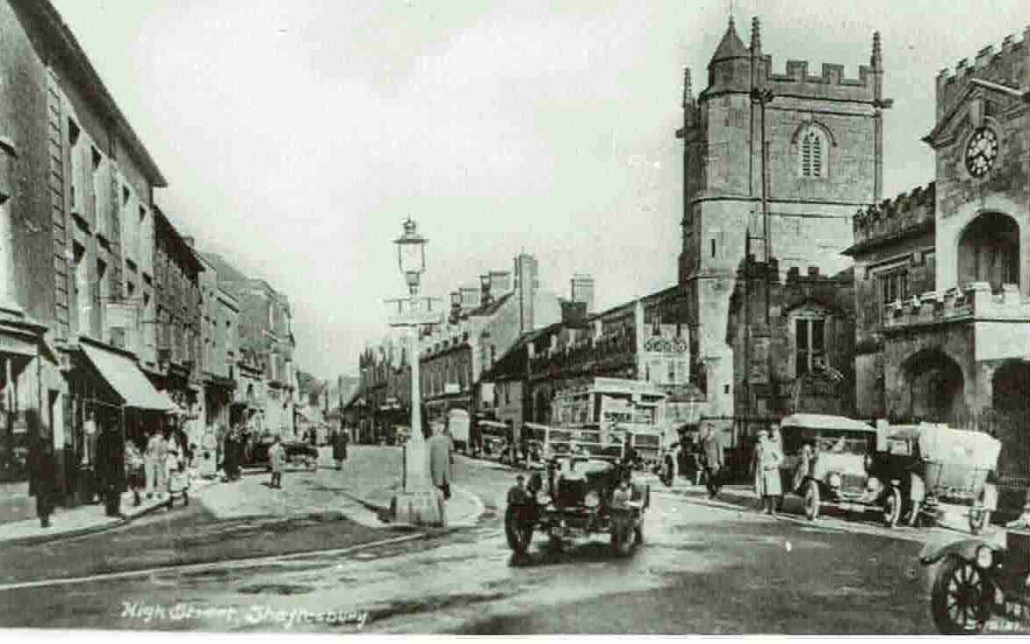Transport
Roads
For hundreds of years, Shaftesbury has been the hub for roads across the south-west, with roads going westwards from London to Exeter and south and northwards to and from the coast.
Roads at the beginning of the 20th century were often poorly surfaced, with crushed greensand and flint as the main road-making and mending materials. Stones were placed in heaps alongside roads and men were paid to break them up into the correct size.
In summer the roads were sprayed with water to keep down the dust, and in winter men were paid to scrape off the mud with hand scrapers.
Tarmacadam was introduced with the advent of petrol and diesel powered motor transport from 1895, and roads had been tarred to facilitate rubber tyres. However this was an expensive business, and Shaftesbury Town Council was not able to afford the surfacing which it acknowledged was urgently needed.
Vehicles and their manufacture and repair
There was still a large predominance of horse-drawn traffic during the first quarter of the 20th century. Shaftesbury Cattle Market Day was on Saturdays, and often there would be a hundred horse-drawn vehicles at the market.
Many people owned horse-drawn vehicles, such as traps and dog carts, and they could also be hired out.
The Farris engineering company in Victoria Street had long been making steam driven tractors and rollers. They opened Shaftesbury’s first garage for internal combustion vehicles. Other garages quickly appeared in the town, often as businesses converted from dealing with horse-drawn vehicles to motorised transport. Short’s Carriage business stood on the site of the current post office on the corner of Angel Square.
The first cars in Shaftesbury belonged to professional men, such as Dr Walker of Castle Hill House and John Kingsley Rutter, who owned a Benz. The maximum speed of the Benz was 20 mph, which was just as well, as its braking system was not very effective. Cars were soon followed by motorbikes, and the need for better road surfaces became a priority.
By 1914 in the High Street and Salisbury Street there were five garages and three bicycle workshops to meet popular demand. In local villages the garage trade fell to the blacksmith but petrol pumps were scarce and most cars carried fuel cans on running boards and spare tyres, initially solid but later pneumatic.
In 1913 bicycles first went into mass production, and quickly became very popular in Shaftesbury. The Grosvenor Cycle shop in Salisbury Street offered repairs and accommodation to touring cyclists; women also took up cycling, adjusting their clothing to make it easier and safer astride a bike.

